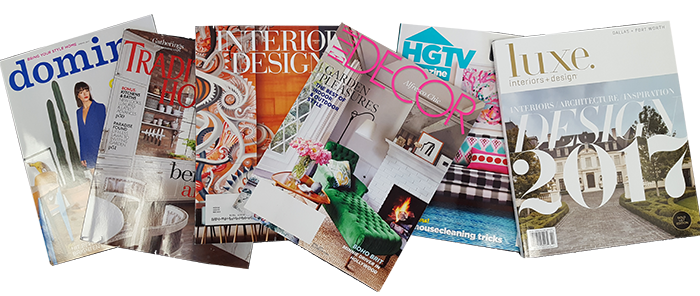
Why Magazines Still Matter When Marketing Home Furnishings
Executive Vice President and Managing Partner
Burns360
When it comes to print journalism, here are some facts for you. As someone who’s been pitching writers and reporters for more 20 years, let me warn you, they aren’t pretty.
- In 2014, 91 U.S. and Canadian-based magazines ceased publication, up from 51 closures in 2013.
- In 2015, budget cuts forced the U.S. political magazine National Journal to end its 46-year-old print publication and go completely online.
- On the newspaper end, total ad revenue in 2013 was 49% lower than it was a decade earlier.
- According to the Pew Research Center’s “State of the News Media 2014 ” study, the newspaper workforce has shrunk by about 20,000 positions, or 39% in the last 20 years.
Where have so many of your favorite publications gone? To the World Wide Web.
The rise of digital platforms has forced modern media to consider new ways to relay relevant content to their audiences. Today, audiences want simplicity, quality and quick access to engaging material over platforms they prefer and can easily share—all of which point to the web.
But that doesn’t mean print media is dead. For some industries, in fact, print publications still play a major role in building brand awareness and driving sales.
The home furnishings industry is one of them. In fact, when design and good product photography are major keys to creating demand, magazines are a critical platform for bringing the art of design to life. And for driving sales.
Why marketing home furnishings differs from other categories.
If you were selling software instead of home furnishings, print publications would be a minor concern. But you aren’t. House Beautiful. Elle Décor. Veranda. Interior Design. Domino. HGTV. DWELL, Traditional Home. LUXE. The list goes on. In fact, magazines in the shelter category are still very healthy, and we have even seen such long-time leaders, like Metropolitan Home, come back in print after ceasing publication. That’s because these national or prominent regional publications focus on the very products you’re selling and the consumers who will buy them.
These magazines provide trending information on interior design, art and fashion that strongly influence buying decisions. In fact, many designers will tell you back issue of design and lifestyle magazines are like their personal library—a rich source of information they often revisit time and again for inspiration. No doubt consumers do as well.
Information is just as important as inspiration.
Magazines provide a “culmination” of material that has been vetted, researched and authenticated by experts. Since magazines have limited pages in which to share content and photography (especially due to a decline in print as an advertising medium), what makes it into print has been deemed the most valuable, up-to-date and trend-topping information by the editorial staff.
When it comes to marketing home furnishings, leading magazines not only help drive brand awareness, design and product trends, they also convey a strong third-party endorsement. Interior designers and consumers alike will tell you that they mark or tear out pages that highlight products and ideas they want to remember, showcase (and, of course, buy) themselves.
When it comes to marketing home furnishings, leading magazines convey a strong third-party e...Click to tweet
Shelf life matters. So does the ability to sit back and savor the content.
Check your own home! You aren’t the only person who holds on to magazines for years, and revisits those issues when looking for design references or to rethink spaces. Print is where you can focus on stories that are more resonant and essential; stories that you can still read years after first seeing it in print.
Though we’ve seen a shift in print media publishing overall, for industries like home furnishings, the newsstand is as robust as ever. And as digital marketing and public relations professionals, it is critical to continue pitching magazine editors and reporters with relevant, quality content.
After all, in the home furnishings industry, there will always be a spot for the printed word.


